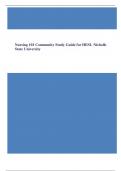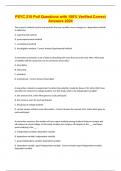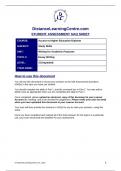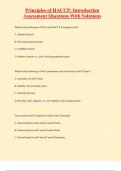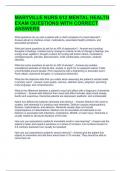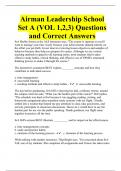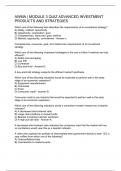Exam (elaborations)
Nursing 101 Community Study Guide for HESI- Nicholls State University
- Course
- Nursing 101
- Institution
- Nicholls State University
Nursing 101 Community Study Guide for HESI- Nicholls State University/Nursing 101 Community Study Guide for HESI- Nicholls State University/Nursing 101 Community Study Guide for HESI- Nicholls State University/Nursing 101 Community Study Guide f
[Show more]
